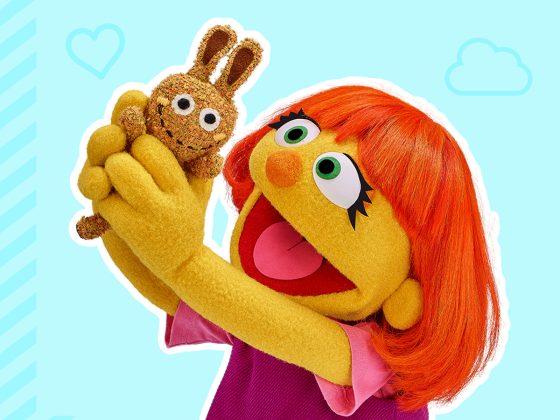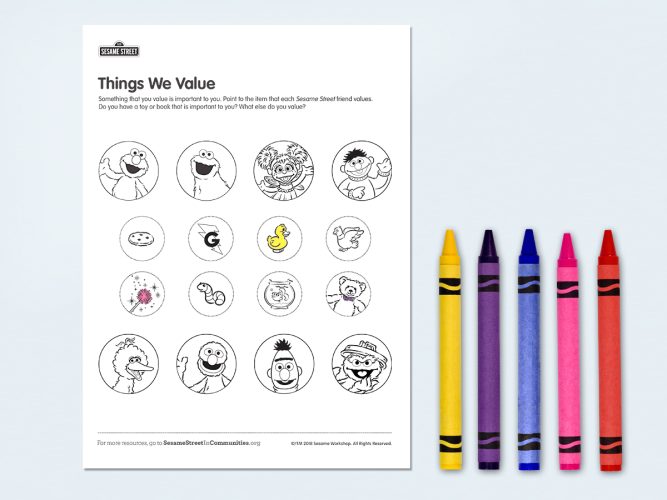
Session 3: V Is for Value
Children can grow to understand that the things people spend money on have costs as well as value.
Welcome to Session 3: V Is for Value!
In this session, explore resources, hands-on activities, and talking points to teach children about the concept of value, and the difference between wants and needs!
1. Talk Together
Talk Together
Young children can begin to understand that different people place different values on things—what may be important to one person could be less important to another. Eventually, children will grow to understand that the things people spend their money on have costs (a price tag) as well as value (their worth to someone). Explain the concept of value by telling children that it means “how important something is to you.”
During circle time, you might ask each child to talk about something that’s important to them and why. Start by talking about something you value.
I value my dog because she makes me happy. I love taking walks with her and I love when she keeps me company at home.
I value my scarf because I made it myself—and it keeps me warm on cold days.
You can customize the conversation based on the time of year, your weekly theme, or special events. For example:
What’s important to you or what do you value during the holidays? What do you value about your neighborhood? What do you value about your family?
During show-and-tells, invite children to talk about why something is important to them. Thank you for sharing your stuffed animal. It has a lot of value to you! What do you like about it? Why is it important to you?
You can reinforce what they say by pointing out that the things they shared have value to them because they’re fun, comforting, make them laugh, remind them of a special time, make them feel proud, etc.
How important something is to you. Value is also about what people are willing to pay for something, based on how important it is to them.
2. Explore Together
Explore Together
What’s the difference between buying something you want and buying something you really need? Young children may not know yet.
Explain to children the things that people need:
All of us need nutritious food, water, shelter, and clothing. These are things that keep us healthy and safe.
Then explain things that people want:
Sometimes we want to buy an extra thing, like a new toy or special snack. Those extras are not as important as the things we need.
Watch this video of Bert and Ernie making choices at the grocery store. Talk with children about how Ernie learns that there are important foods they need and other foods they want.
3. Play Together
Play Together
Invite children to write about and draw people, activities, or things that they value by using the “Things We Value” printable page. Then, help them cut out and fold the pages. Staple each book’s pages together and encourage children to take their books home and share them with family and friends.
4. Communicating with Caregivers
Communicating with Caregivers
Consider sharing the article V Is For Value to help parents and other caregivers reinforce the concept of value at home with their children.
You might also share the article Need It or Want It to help families open a conversation about the difference between wants and needs.



